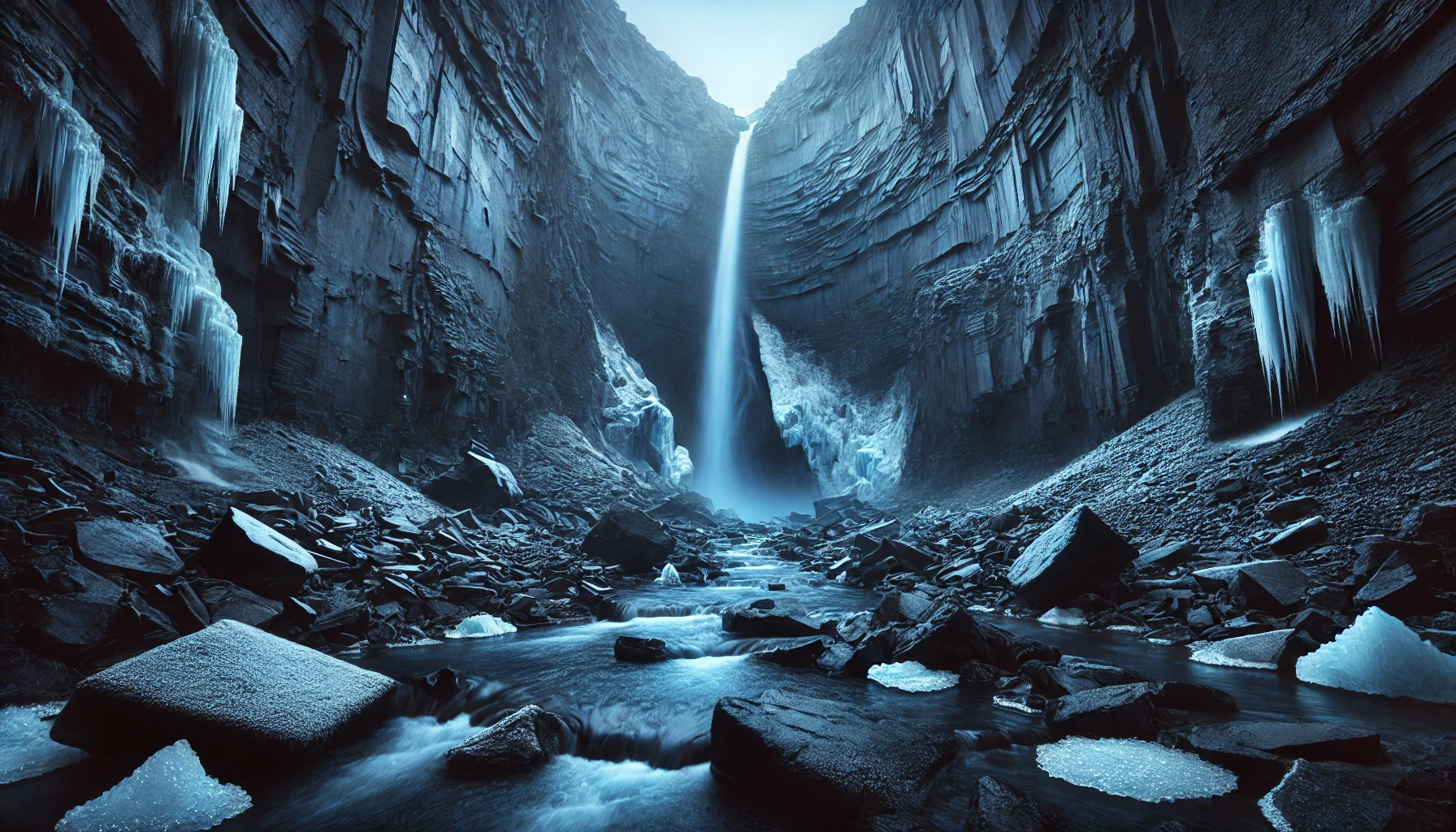YitarAsh (The Frozen Cave) is a name that refers to a massive cave system in Ishitar made of YitarCal (Cold Stone). YitarAsh is the largest known supply of YitarCal.
The water cycle in the caves is such that there is an entrance to YitarAsh via YitarBen (The frozen beginning), a giant waterfall fed from a natural reservoir. The water then flows into the cave system, over the YitarCal, being cooled immensely. The water travels through all the caves, and out to the Arami reservoir from YitarArl (The frozen entrance), the last waterfall in the cave system. Once it reaches the Arami reservoir it is heated by the sun, evaporates, and is carried by the wind back over to the YitarBen reservoir, where it recondenses and falls as rain water.
Ozone
Historically the name was better translated as the frozen wasteland. This is because while the caverns themselves are beautiful, this is a product of the high concentrations of Ozone, and it’s distortion of the light.
 *Photo taken at the bottom of YitarArl (The frozen entrance) the last waterfall at the end of the YitarAsh Caverns
*Photo taken at the bottom of YitarArl (The frozen entrance) the last waterfall at the end of the YitarAsh Caverns
There are a few consequences of this Ozone:
- The ozone remains mostly trapped inside the caves, giving off an incredibly strong smell that the local people used to think was the work of a “demon”
- You can often see “ice mirages” in the caverns because of this. The ozone is much denser than the air, and create refractive mirages as light passes through it.
- There is a blue tinge to the light due to the density
YitarCal
YitarCal (Cold Stone) is a type of stone endemic to Ishitar. The stone has an incredibly high heat conductivity. It is frequently used in electronics as a heat dissipation material. It’s lightweight, and offers an incredibly high cooling capacity for it’s density. There are also very large deposits relatively close to the surface, making it a cheap resource to mine.
YitarCal also has compounds that react with ozone to produce an endothermic reaction. Many commercial devices today utilize Yitarcal + Ozone to cool high heat devices. For example server warehouses, farming equipment, and manufacturing equipment. Anything large enough to house the necessary accompanying gas compression, and ozone recapturing equipment. This practice is becoming less popular as the dangers of the ozone are quite high to human health, particularly for operators of equipment.